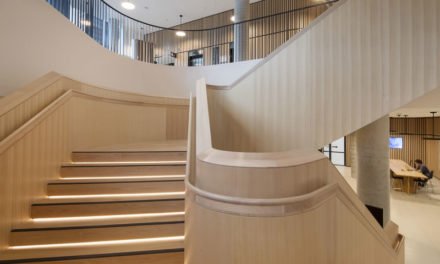In Australia we have become very accustomed to an environment where borrowing costs – especially for households but also for businesses – are extremely low. This is the case for both variable rate and fixed-term loans. This remains the status quo (an important point to remember) and is a crucial message for the residential construction industry to convey.
Granted, there are two thorns in the side. The tightening of credit conditions for residential property investors – imposed by the Federal Government’s regulator, the Australian Prudential Regulation Authority (APRA) – has had a wider negative impact on sentiment and activity than desirable. We have been warning about this outcome for a long time. On top of that we now have high-variable mortgage rate costs for all customers with the four major banks, which is a very large chunk of the population.
Nice one! So, which sector of the Australian economy is most responsible (through direct and indirect effects) for propping up the Australian economy in recent years? New home construction. What does both credit rationing and higher borrowing costs have a large adverse impact on? New home construction. If you were marking an essay, you would grade it an a F!
However, there is a bright side. In a post-GFC environment, where there is an obvious bias towards negative news, and tighter financing arrangements add fuel to that fire, we need to remember that interest rates are still extraordinarily low.
Borrowing costs remain at, or close to, record lows. Variable and fixed loan rates both still sit at sub five per cent. Once they start moving up again (not for at least 12 months from now, by the way), we may never see such low rates again.
That is a positive message for the residential construction industry to understand (for renovations as well as new housing) – plus – it also applies to commercial construction. If you’re set to go, get into new home building or renovations! That’s not an irresponsible message; people have to be financially set to take on the borrowing decision. If they can, now is the time.
What else is going on?
HIA Economics updated its forecasts for renovations activity as well as new home commencements (and new investment) on 27 October 2015. A free download is available at: www.hia.com.au/BusinessInfo/economicInfo/housingForecasts
On 29 October 2015 a breakdown of forecasts by types of dwellings was made available by Australian Construction Insights (ACI), the economic consultancy arm of HIA Economics. Additional information regarding this product can be found at: www.aciresearch.com.au/en/premium-products
For a “˜secret squirrel’ insight, we hold the view here at HIA that there is some additional upsides to semi-detached dwelling construction, so the focus is not entirely on apartments.
That changing composition of what we build is a crucial area of focus for everybody in the industry. I have been taking about this situation for a long time, and my team continue to research a number of areas directly and indirectly related to this topic.
HIA Economics released a discussion paper last week looking at the amount of work in the pipeline for different types of new dwellings. This is freely available at: www.hia.com.au/media/HIA
There are a range of challenges and opportunities out there for any market participants engaged in new home building, renovations activity, and/or commercial construction.
A low-borrowing cost environment, that just got slightly tighter less than a month ago, is one amongst a plethora of examples.
Be wary, but don’t let the recent interest rate chatter get in the way of recognising a strong short-term outlook. All the links above highlight a positive short-term forecast, while still remaining transparent about the potential risks ahead.










